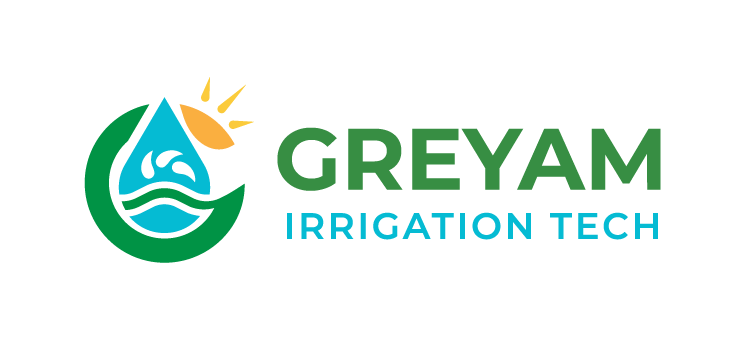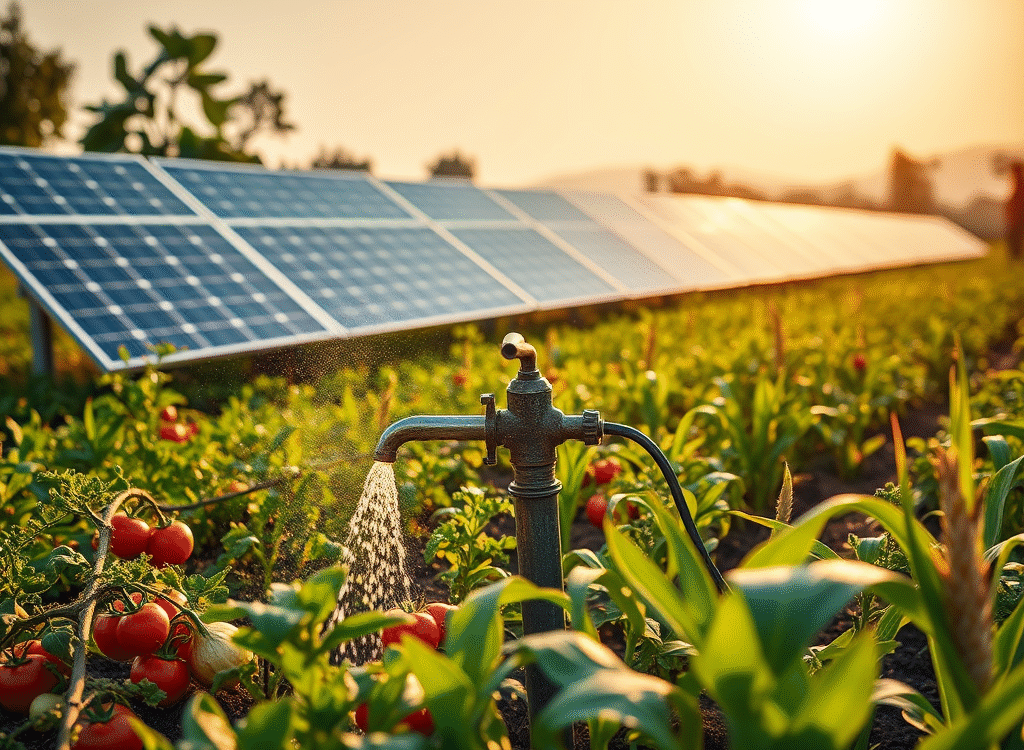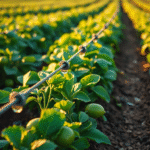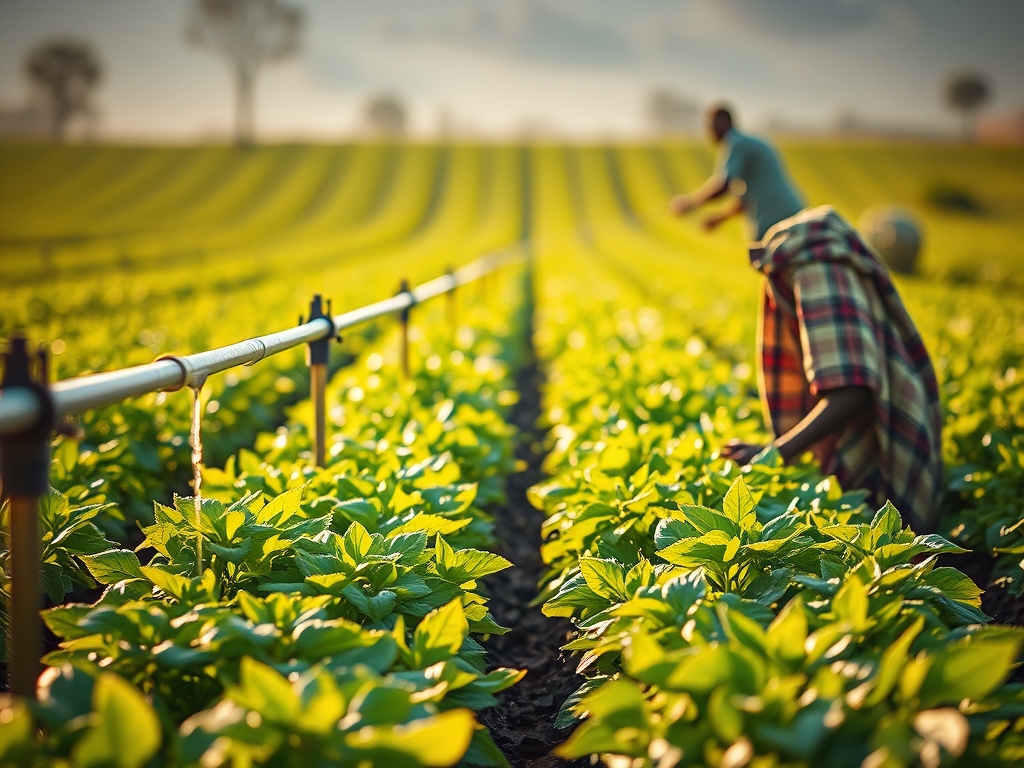In Uganda, where over 70% of the population depends on agriculture, smallholder farmers face a growing list of challenges — unpredictable rainfall, prolonged dry spells, rising fuel costs, and limited access to modern technology. But one solution is quietly changing the game across rural farms: solar-powered irrigation.
This clean, affordable technology is not only helping farmers grow more with less, but it’s also making agriculture more resilient, efficient, and climate-smart.
What Is Solar-Powered Irrigation?
Solar-powered irrigation uses energy from the sun to pump water from a source (like a river, borehole, or tank) to a farm through drip lines, sprinklers, or hoses. Unlike diesel or petrol pumps, solar pumps don’t rely on fuel, which means lower running costs and fewer breakdowns.
Why It’s a Game-Changer for Smallholder Farmers
- Reduces Cost of Production
Traditional fuel pumps cost money every time they run. A smallholder farmer using a diesel pump may spend UGX 20,000–30,000 a week on fuel. In contrast, solar pumps use free sunlight — once installed, they cost almost nothing to operate. - Increases Crop Yields
Irrigation enables year-round farming. Farmers no longer have to wait for the rainy season. This means more planting cycles, better harvests, and higher income. According to a 2023 study by the Ministry of Agriculture, solar-irrigated plots in Eastern Uganda recorded a 35–50% increase in yield for crops like tomatoes, onions, and maize. - Fights Climate Uncertainty
Rain-fed farming is becoming riskier due to climate change. Solar irrigation gives farmers more control over when and how they water crops, reducing crop failure even during drought. - Improves Food Security
More reliable harvests mean more food on the table — and more to sell. Families using solar pumps can grow vegetables even in dry months, improving both nutrition and income. - Protects the Environment
Solar systems don’t emit greenhouse gases like petrol pumps. And when used with drip irrigation, they reduce water wastage by up to 80%, preserving local water sources.
Real-Life Example: A Farmer from Iganga
Sarah Nansubuga, a tomato farmer in Iganga District, used to depend on rain and a diesel pump she shared with three neighbors. Watering her garden cost her over UGX 100,000 per season.
In 2024, she installed a small solar pump supported by a local clean-tech program. Her yield doubled, she harvested even during dry spells, and her fuel expenses dropped to zero.
“Now I irrigate whenever I want — even at night if needed. I’m planting more, earning more, and I don’t stress about fuel prices anymore,” Sarah says.
What Does a Solar Irrigation Setup Include?
- Solar panels
- Water pump (submersible or surface)
- Drip/sprinkler system
- Water tank or storage
- Optional: battery or controller, depending on system size
Many suppliers, like GREYAM IRRIGATION TECH UG LTD, offer customized packages based on your land size, water source, and crops.
Common Questions Farmers Ask
1. Isn’t solar too expensive?
While the upfront cost is higher than fuel pumps, solar pays for itself within 1–2 seasons through savings and increased harvests.
2. Can it work if it’s cloudy?
Yes. Uganda’s average solar radiation is high enough (about 5 kWh/m²/day) to power pumps even during cloudy weather. Some systems also include small batteries.
3. What crops benefit from solar irrigation?
All major crops — especially vegetables (tomatoes, onions, cabbage), fruits, maize, and beans. Drip irrigation is especially efficient for high-value crops.
Support Available in Uganda
There are several government and private programs supporting farmers to adopt solar irrigation through:
- Subsidized equipment
- Pay-as-you-go financing
- Technical training and after-sales support
GREYAM IRRIGATION TECH UG LTD is one of the local providers helping farmers access affordable, field-tested solar systems with ongoing technical support to ensure long-term results.
Final Thoughts
Solar-powered irrigation is more than a new technology — it’s a lifeline for smallholder farmers in Uganda. It empowers them to grow more food, earn more money, and adapt to climate change without relying on expensive fuel or unpredictable rain.
With the right awareness and access to support, this clean-tech revolution can reach every corner of rural Uganda — one farm at a time.
📞 Ready to Start Solar Irrigating Your Farm?
Talk to the team at GREYAM IRRIGATION TECH UG LTD for a free assessment and quote.
📞 Call/WhatsApp: +256 704 967 575
🌐 Visit: www.greyamirritech.com/
📍 Offices in Kampala Uganda




